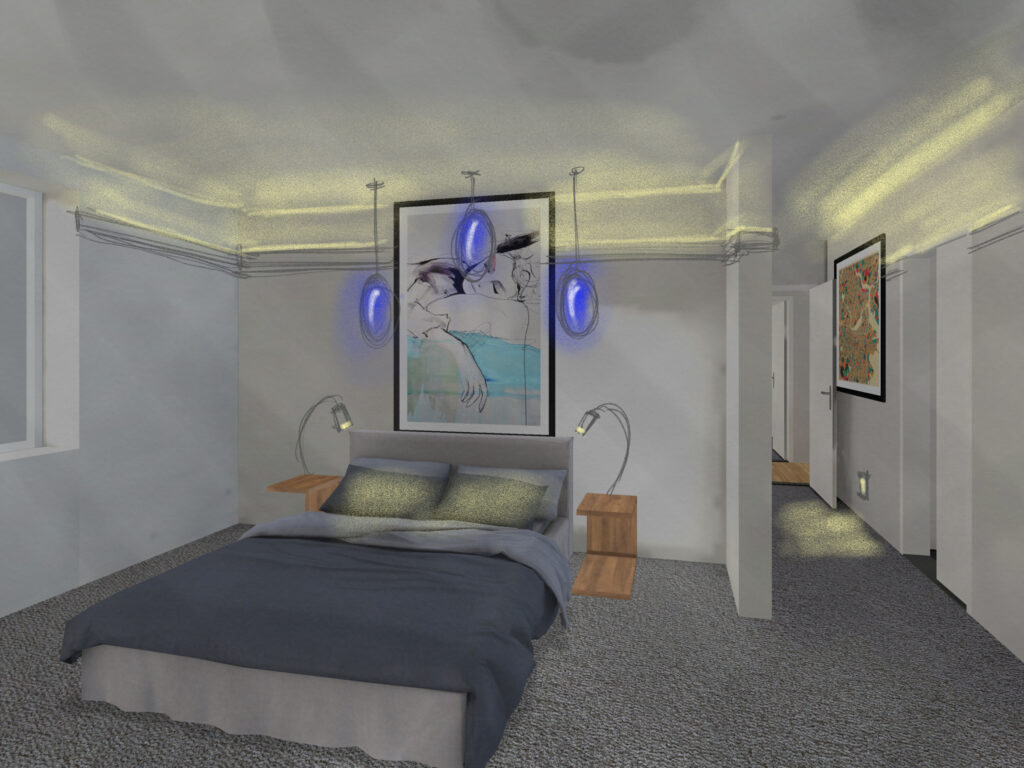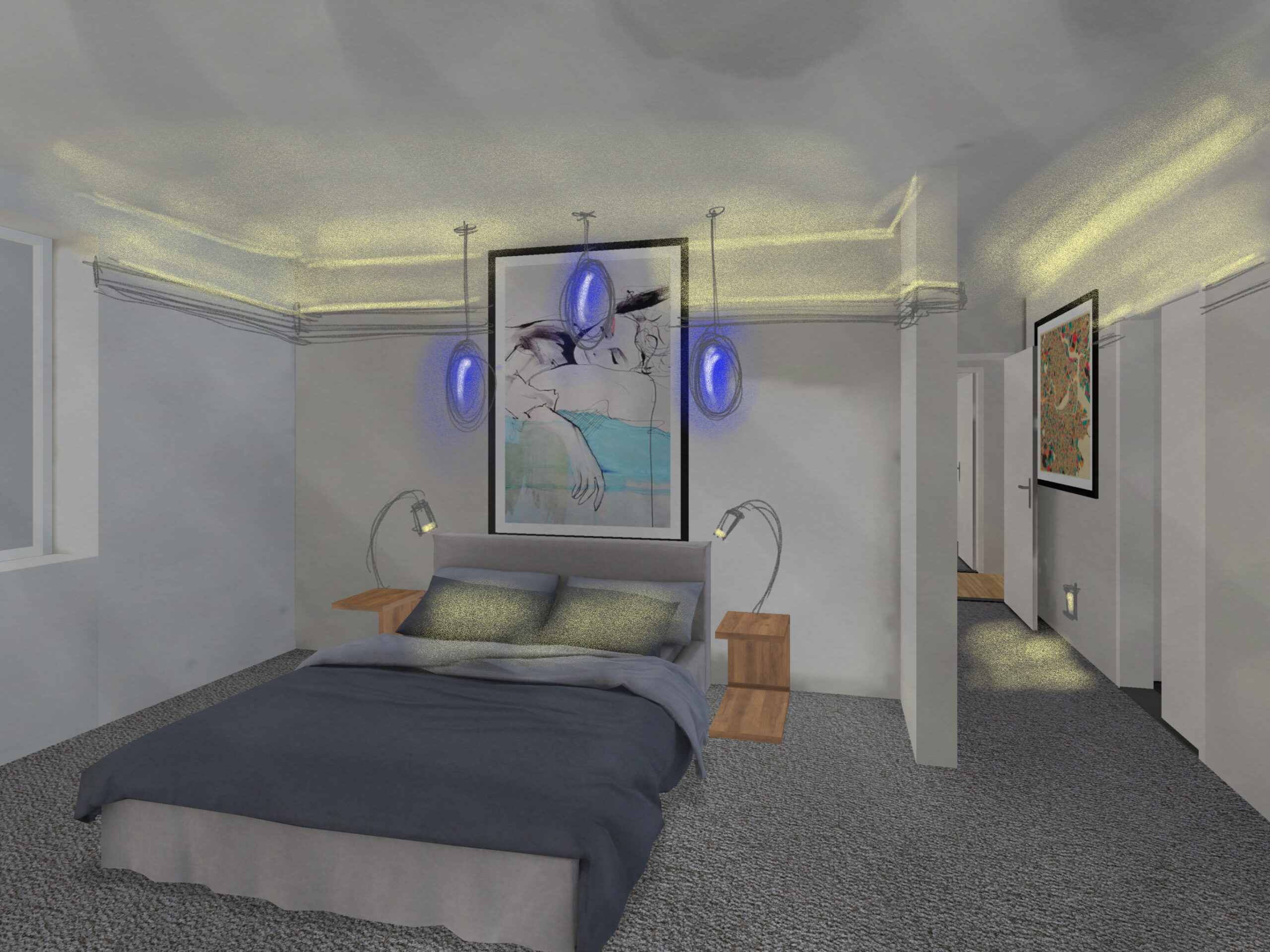So now you know- because I am certain you read all of my posts again and again until they are burned in memory- that we need light that helps us adapt to changes in tasks, times, eyes, and moods.
Most of the time, I do not add any lights for changing. I add dimmers instead.
If I have done my job well, there are already multiple layers of light in the design: light for doing better, light for knowing more, light for feeling better and light that tells your story. Chances are, you do not need any more lighting fixtures. You need controls.
The video above is essentially a time-lapse of my design process for a recent bedroom. I layered in zones for light, then sketched various solutions that might deliver all the kinds of light needed.

At the end, the sketch ends up with:
- Light for doing better, especially in small reading lamps at bedside.
- Light for knowing more, such as the indirect cove-like trim on the walls and the step light in the hall.
- Light for feeling better, such as the pendants above the bed.
- Light that tells the story, such as focus on artwork.
Helping us adapt to changes is a central promise of the gift of light, but in order to deliver on the promise, light itself must change, must adapt to our needs. That means we need adaptable light, light that dims, repositions, changes.
Adjustable lights, like the bedside lamps shown here, can focus light where needed. But the biggest benefit comes from simple-to-use dimmers and controls.
Walking into the bedroom after your partner has gone to sleep and flipping on the ceiling fan lights is likely to lead to you sleeping on the couch. A dim step light that softly illuminates the floor, on the other hand, will keep you from stumbling over the shoes on the floor without irritating the sleeper.
Bright lights in the room are great for wrapping gifts, packing a suitcase, making the bed, or cleaning the floors. Bright lights at night, however, can disturb your circadian rhythm in as little as five minutes. If you can dim them to lower levels after sunset, you stand a better chance of better sleep, and that’s worth the $15 for a dimmer.
I won’t spend too much time talking about setting a mood in the bedroom. This isn’t that kind of website. You can use your imagination to see how softer, dimmer lighting might be advantageous in certain settings.
And now a bit of practical advice: if you have just one layer of light in your space, make sure it is on dimmer and that it dims nicely and smoothly, without flicker or dropout, all the way to black. If you have two layers of light in your space, keep adding dimmers. If you have four, five, or six layers of light in a space, consider a simple one-room control system like Lutron Caseta Pro.
The only way to get light that helps you change easier is to…get light that changes.
